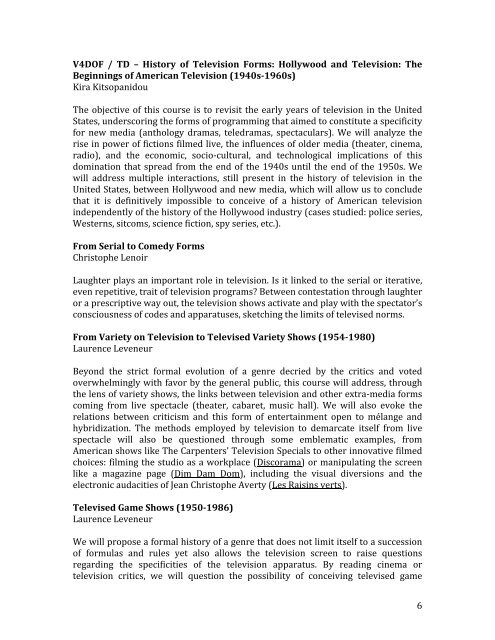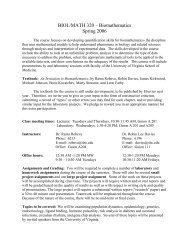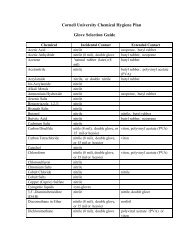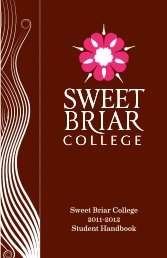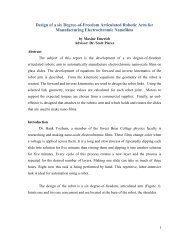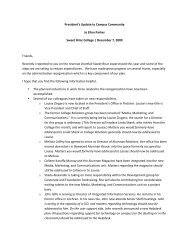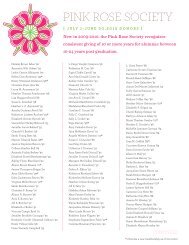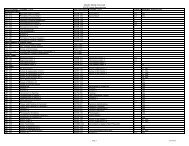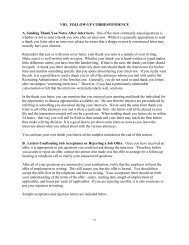Brochure - English translations of course offerings
Brochure - English translations of course offerings
Brochure - English translations of course offerings
Create successful ePaper yourself
Turn your PDF publications into a flip-book with our unique Google optimized e-Paper software.
V4DOF / TD – History <strong>of</strong> Television Forms: Hollywood and Television: The <br />
Beginnings <strong>of</strong> American Television (1940s-1960s) <br />
Kira Kitsopanidou <br />
The objective <strong>of</strong> this <strong>course</strong> is to revisit the early years <strong>of</strong> television in the United <br />
States, underscoring the forms <strong>of</strong> programming that aimed to constitute a specificity <br />
for new media (anthology dramas, teledramas, spectaculars). We will analyze the <br />
rise in power <strong>of</strong> fictions filmed live, the influences <strong>of</strong> older media (theater, cinema, <br />
radio), and the economic, socio-‐cultural, and technological implications <strong>of</strong> this <br />
domination that spread from the end <strong>of</strong> the 1940s until the end <strong>of</strong> the 1950s. We <br />
will address multiple interactions, still present in the history <strong>of</strong> television in the <br />
United States, between Hollywood and new media, which will allow us to conclude <br />
that it is definitively impossible to conceive <strong>of</strong> a history <strong>of</strong> American television <br />
independently <strong>of</strong> the history <strong>of</strong> the Hollywood industry (cases studied: police series, <br />
Westerns, sitcoms, science fiction, spy series, etc.). <br />
From Serial to Comedy Forms <br />
Christophe Lenoir <br />
Laughter plays an important role in television. Is it linked to the serial or iterative, <br />
even repetitive, trait <strong>of</strong> television programs? Between contestation through laughter <br />
or a prescriptive way out, the television shows activate and play with the spectator’s <br />
consciousness <strong>of</strong> codes and apparatuses, sketching the limits <strong>of</strong> televised norms. <br />
From Variety on Television to Televised Variety Shows (1954-1980) <br />
Laurence Leveneur <br />
Beyond the strict formal evolution <strong>of</strong> a genre decried by the critics and voted <br />
overwhelmingly with favor by the general public, this <strong>course</strong> will address, through <br />
the lens <strong>of</strong> variety shows, the links between television and other extra-‐media forms <br />
coming from live spectacle (theater, cabaret, music hall). We will also evoke the <br />
relations between criticism and this form <strong>of</strong> entertainment open to mélange and <br />
hybridization. The methods employed by television to demarcate itself from live <br />
spectacle will also be questioned through some emblematic examples, from <br />
American shows like The Carpenters’ Television Specials to other innovative filmed <br />
choices: filming the studio as a workplace (Discorama) or manipulating the screen <br />
like a magazine page (Dim Dam Dom), including the visual diversions and the <br />
electronic audacities <strong>of</strong> Jean Christophe Averty (Les Raisins verts). <br />
Televised Game Shows (1950-1986) <br />
Laurence Leveneur <br />
We will propose a formal history <strong>of</strong> a genre that does not limit itself to a succession <br />
<strong>of</strong> formulas and rules yet also allows the television screen to raise questions <br />
regarding the specificities <strong>of</strong> the television apparatus. By reading cinema or <br />
television critics, we will question the possibility <strong>of</strong> conceiving televised game <br />
<br />
6


